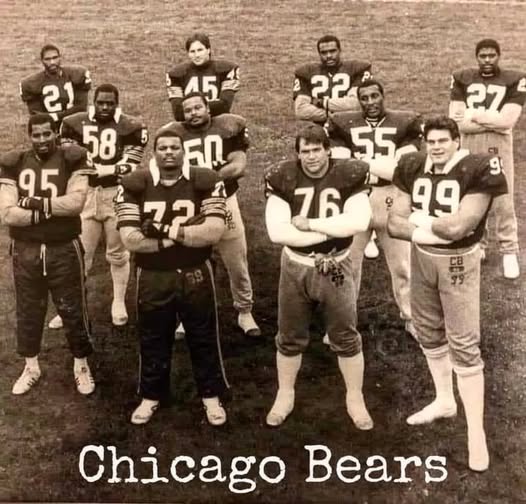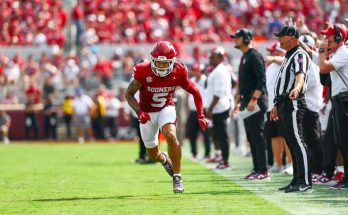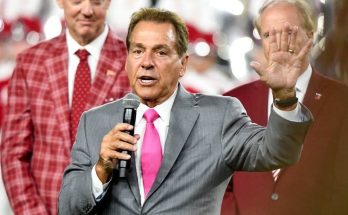The 1985 Chicago Bears are often remembered as one of the most dominant teams in NFL history, and at the heart of their legendary season was a defense so fearsome that it redefined the way football was played. The architect of this destructive unit was defensive coordinator Buddy Ryan, whose innovative “46” defense became the blueprint for chaos, terrorizing quarterbacks and dismantling offenses with ruthless efficiency. What made this scheme so revolutionary wasn’t just its aggression or complexity—it was its simplicity in execution, combined with the perfect personnel to unleash its full potential. And at the core of its identity was an ode to one of Ryan’s favorite players, safety Doug Plank, whose jersey number, 46, gave the defense its iconic name.
The origins of the 46 defense trace back to Buddy Ryan’s time as an assistant coach with the Bears in the late 1970s and early 1980s. Ryan was a defensive mastermind who believed in overwhelming offenses with pressure rather than sitting back in coverage. Traditional defenses relied on reading and reacting, but Ryan’s philosophy was to dictate the terms of engagement—forcing the offense to adjust to his scheme rather than the other way around. The 46 defense was designed to do just that, creating mismatches and confusion by overloading the line of scrimmage with attackers while still maintaining the flexibility to drop into coverage when needed.
At its core, the 46 was a hybrid front that blurred the lines between a 4-3 and a 3-4 alignment. Instead of the standard four down linemen and three linebackers, Ryan often positioned his players in a way that made it nearly impossible for offenses to identify who was rushing and who was dropping into coverage. The alignment typically featured four down linemen, but the linebackers and safeties were positioned aggressively close to the line, often disguising their intentions until the last possible moment. The key to its success was the versatility of the personnel—players like Mike Singletary, Dan Hampton, Richard Dent, and Otis Wilson weren’t just talented; they were perfectly suited to the unpredictability of Ryan’s system.
The name “46” itself was a tribute to Doug Plank, a hard-hitting safety who played for the Bears from 1975 to 1982. Plank wasn’t the most physically gifted player, but he embodied the relentless, no-nonsense attitude that Ryan demanded from his defense. Plank’s jersey number, 46, became synonymous with the scheme, a nod to the way Ryan often used his safeties as extra run defenders or blitzers. Plank’s style of play—reckless abandon mixed with disciplined execution—was the ethos of the entire defense. Though Plank retired before the 1985 season, his legacy lived on in the name of the scheme that would carry the Bears to immortality.
What made the 46 defense so devastating in 1985 was the way it exploited offensive weaknesses. Most offensive lines were built to handle traditional four-man rushes, but the 46 frequently sent six or even seven defenders after the quarterback. This created a numbers game that offenses simply couldn’t solve. If a team kept extra blockers in to protect the quarterback, the Bears would drop into coverage and take away passing lanes. If they tried to spread the field, Chicago’s front would collapse the pocket before the play could develop. The result was a unit that led the league in nearly every major defensive category, including fewest points allowed (198), fewest yards allowed (4,135), and most takeaways (54).
The personnel were just as important as the scheme. Middle linebacker Mike Singletary was the heart and soul of the defense, a ferocious tackler with an uncanny ability to diagnose plays before they unfolded. Defensive end Richard Dent, the Super Bowl XX MVP, was a nightmare for offensive tackles, using his speed and power to rack up 17 sacks that season. Dan Hampton and Steve McMichael anchored the interior, eating up blockers and freeing up lanes for the linebackers to wreak havoc. And in the secondary, players like Dave Duerson and Gary Fencik provided the versatility to play both coverage and run support, a necessity in Ryan’s system.
Perhaps the most terrifying aspect of the 1985 Bears defense was its ability to demoralize opponents. The unit didn’t just stop teams—it humiliated them. In Week 11, the Bears famously shut out the Dallas Cowboys 44-0, sacking quarterback Danny White seven times and forcing four turnovers. In the playoffs, they allowed just 10 total points across three games, culminating in a 46-10 demolition of the New England Patriots in Super Bowl XX. That game was a microcosm of the entire season: New England’s offensive line had no answer for the Bears’ pressure, and quarterback Tony Eason was benched after failing to complete a single pass.
The legacy of the 46 defense extends far beyond the 1985 season. Buddy Ryan’s scheme influenced generations of defensive coaches, many of whom adopted elements of the 46 into their own systems. While the NFL eventually evolved to counter the defense’s aggression—with offenses incorporating quicker passes and spread formations—the principles of the 46 live on in modern blitz packages and hybrid fronts. Even today, when a defense brings an all-out blitz or uses a safety as an extra pass rusher, there’s a trace of Ryan’s innovation in the play call.
But more than just a scheme, the 1985 Bears defense was a reflection of its city and its era. Chicago was a blue-collar town, and the team embodied that toughness. They played with a swagger and an edge that resonated with fans, from the iconic “Super Bowl Shuffle” to the way they celebrated big hits. They weren’t just a great defense—they were a cultural phenomenon.
In the end, the 46 defense was more than just X’s and O’s. It was about attitude, execution, and the perfect marriage of a brilliant coach and the right players. Buddy Ryan’s creation, named in honor of a player who personified its spirit, became the foundation for one of the greatest teams in NFL history. And while the game has changed since 1985, the legend of that Bears defense remains as vivid as ever—a reminder that sometimes, the most revolutionary ideas are the ones that strip football down to its most violent, exhilarating essence.



